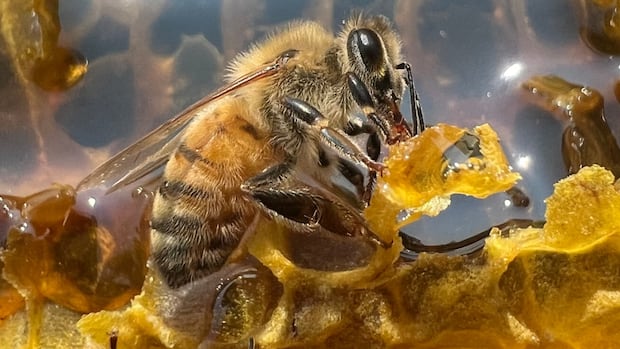Decade-high number of black bears killed by B.C. conservation officers in first 9 months of year, data shows

Newly released data shows a decade-high number of black bears have been killed by conservation officers in British Columbia in 2023 so far due to conflict with humans.
B.C. Conservation Officer Service (BCCOS) statistics show its officers killed 460 black bears in the first nine months of this year, during which it received 21,000 reports from British Columbians about black bear conflicts.
Both numbers are the highest recorded for that particular timespan since 2011, when the BCCOS first started releasing bear-related statistics.
Experts and residents say it underlines an urgent need to remove attractants as bears continue to wander into communities.
The figures have been released at the tail end of a fall that has seen a notable increase in black bear behaviour in some urban areas, while there have also been several reports of grizzlies moving into city limits.
The number of reported black bear interactions spiked in August, the data shows, with almost 6,000 calls to BCCOS that led to the service killing 151 of the animals.
“It’s been wild,” said conservation officer Alicia Buchanan, who took CBC’s The National on a recent ride-along.
She says the area of Chilliwack alone — a Fraser Valley municipality around 90 kilometres east of Vancouver — has had 400 calls so far this year, double what it would normally expect.
“We’ve had numerous, numerous calls a day, all times of the day, all days of the week,” Buchanan said.
Pre-hibernation hunger pangs
Experts say bears are most hungry in late summer and fall as they try to fatten up before winter hibernation.
One scientist says the unavailability of bears’ traditional foods — due to the effects of wildfires, smoke and long-lasting drought — may explain a growing need to look to urban areas for food.
“The [death] numbers are high. I think they’ve particularly peaked in some areas in August,” said conservation ecologist Cole Burton, who teaches at the University of British Columbia.
“To me, [that] is consistent with the idea that some of these sort of late summer foods — like berries — are not available.”
For Burton, the effect of human-caused climate change on the province’s bears is undeniable.
“There is little doubt that climate change is having big effects on ecosystems — in terms of food, natural food availability, whether that’s from the berries or salmon,” he said.
“Some of these extreme events like the droughts, the fires, the flooding, these kinds of things are definitely impacting wildlife.”
Urban attractants
Corey Hardeman, who says she saw a bear in her Prince George, B.C., backyard almost every day this summer — including one that was shot soon after by conservation officers — agrees that wildfire and drought have played a role in the bears’ behaviour.
“I don’t think the bears really want to be in town. It’s not a safe place for them,” said Hardeman, an artist in the city around 500 kilometres north of Vancouver. “But if this is where the food is, this is where they’re going to be.”
She says food sources like fruit trees and accessible garbage are attracting hungry bears who may have been affected by habitat loss.

“I feel like there was so much unpicked fruit in this town and some of the garbage — so much just lack of awareness and lack of care.
“What ended up happening is that bears just paid with their lives left, right and centre all summer long.”
BCCOS says any bear accustomed to human food is usually not a candidate for relocation.
“Putting down any bear is a last resort for conservation officers. However, public safety is always our highest priority,” a spokesperson said in a statement.
“I can’t think of a worse day in my career than [one] when you have to remove bears,” said conservation officer Buchanan.
“We hate it, and we understand the public hates it.”
Keep food sources protected
Olivia Lemke, a community co-ordinator for WildSafeBC in Kamloops, says people and communities have to do their part to keep bears safe.
“I would for sure suggest harvesting the fruit as soon as it is ripe,” she suggested to owners of ornamental fruit-bearing trees.
Lemke also suggested that fruit-tree owners pressure wash the tree’s blossoms during springtime to reduce the number of fruit produced that year.

“The goal is that when bears are passing through the natural corridors that we have around here, like the Rivers Trail in Kamloops, they’re going to use that trail and hopefully not find any food rewards on anyone’s property,” she said.
In addition to having bear-resistant bins, Lemke also suggested that homeowners keep their food-waste bins stored inside between collection days, so as to not attract animals.
She said bears are very smart creatures that often make “food maps” so they can rely on the same source of food over and over again.
“So, addressing the root cause — when we’re putting away what is attracting animals into our community … that’s what’s really going to be the effective strategy, rather than relocation.”




